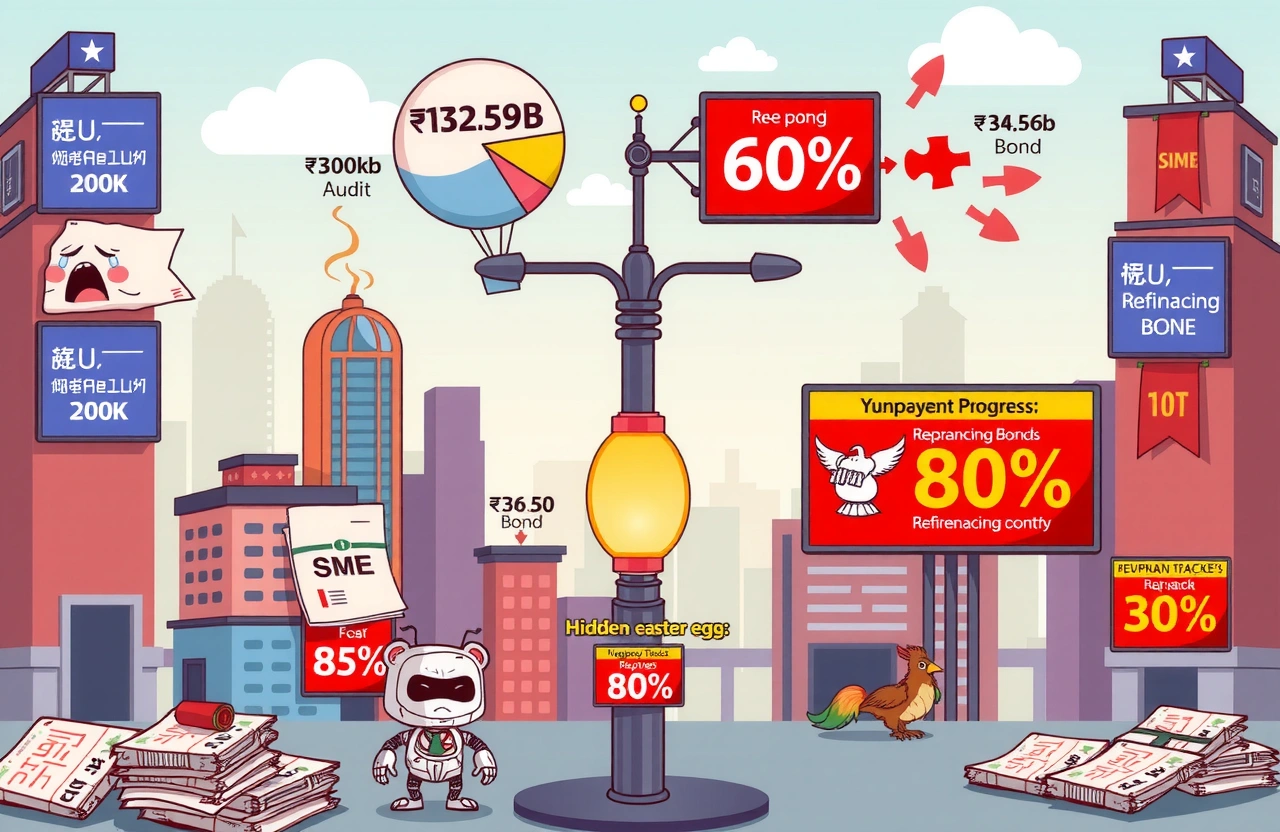Small Businesses Caught in Local Government Debt Web
Zhang Xiao (张晓) stares at the unpaid invoices on his desk – ¥200,000 from a public hospital project completed eighteen months ago. As a water tank supplier in Yunnan’s remote counties, he represents thousands of Chinese SMEs suffocating under growing mountains of overdue payments. “Government projects? I’ll never take another,” he fumes, having shifted entirely to small private contracts despite shrinking margins. His ordeal fuels a national crisis requiring urgent action.
Audit Findings Expose Debt Management Failures
A comprehensive audit across 9 provinces reveals alarming mismanagement of specialized debt funds, totaling ¥132.597 billion in problematic allocations. The revelations showcase the tangled knot of local fiscal pressures and the urgent need for debt resolution.
Patterns of Fund Diversion
- 92 localities redirected ¥65.18 billion toward unrelated expenditures
- Substantial portions repaid SOE liabilities instead of contractor debts
- The absence of standardized tracking systems hampers repayment progress
Yunnan’s Budgetary Response
Following audit findings, Yunnan executed dramatic budget restructuring in June:
- Initial ¥70 billion special bond allocation contained no enterprise debt clearance funds
- Mid-year adjustments redirected ¥35.6 billion specifically toward repaying arrears
- Project construction funding decreased by ¥27 billion to prioritize repayment progress
The Human Cost of Payment Gridlock
Beyond spreadsheets live struggling families like Xue Yue (薛越) in Shanxi. The construction supplier remains owed ¥400,000 since 2023 by Shanxi Construction Investment Group. “Small business invoices pay worker wages,” Xue says. Unable to expand operations since the pandemic era crunch, he survives on property maintenance jobs.
Cascading Impacts
- Contractors abandoning government contracts
- Labor market shrinkage as businesses downsize
- Entrepreneurs unwilling to pursue legal action against clients
Financial Ecosystem Impacts
- Industrial receivables hit ¥24.23 trillion (National Bureau of Statistics)
- Construction sector turnovers take 186 days on average (Chengxin International)
Repayment Progress Across Provincial Lines
Tangible provincial differences emerge as debt clearance gathers momentum:
Divergent Provincial Approaches
- Yunnan: Aggressive strategy directly allocating ¥35.6 billion to repayment progress
- Shanxi: Using ¥2.47 billion special bonds for “debt resolution” without enterprise specifics
- Western Provinces: Significant SOE involvement compounds repayment complexity
Regional Fiscal Challenges
The Taiyuan economy exemplifies structural problems:
- 2024 GDP growth: 1.2% (well below national averages)
- Local revenue fell 2% while expenditures dropped 4.2%
- Debt service consumes 79% of Shanxi’s public spending
The Regulatory Framework
The revised Payment Protection Regulations effective June 1st mandate:
Key Provisions
- 30-day payment requirement for SME contracts
- Maximum payment window capped at 60 days
- Enhanced public procurement transparency protocols
Implementation Challenges
Legal experts like Xiong Yingya (熊迎亚) voice realistic expectations:
- Monitoring mechanisms remain underdeveloped
- The gap between regulation and repayment progress persists
- Recovery requires collective action not just regulatory tools
The ¥10 Trillion Debt Solution
Beijing’s sweeping debt resolution blueprint unfolds through:
Implementation Mechanics
- ¥6 trillion refinancing bonds issued over 2024-2026
- Annual ¥800 billion allocation from special bonds dedicated to debt clearance
- Fund redistribution through provincial governments
Enterprise Payment Allocation
Tracing funds reveals ambiguous allocation:
- The ¥4 trillion cleanup fund lacks repayment progress targets
- Infrastructure debts often prioritized over enterprise arrears
- No standardized auditing frameworks across jurisdictions
Verdict On Provincial Repayment Progress
Genuine repayment progress hinges on multiple factors:
Critical Success Factors
- Transparent fund tracing mechanisms
- Central registry of enterprise government arrears
- Accountability measures diverted fund usage
Beyond Immediate Repayment
- Fiscal responsibility legislation updates
- Revamped tax sharing frameworks
- Local government revenue diversification
The clearing of SME arrears represents more than financial transactions – it determines survival for businesses potential economic growth. Momentum emerges through provincial champions like Yunnan demonstrating tangible repayment progress while many regions struggle with implementation gaps. Prioritizing this repayment progress consistently across China will transform billions in liabilities into revitalized economic activity.
Chinese entrepreneurs await overdue payments must collectively document debts pursue all available remedies while monitoring their provincial repayment progress reports. Contacting your provincial finance bureau requesting accessible arrears resolution timelines accelerates accountability.




